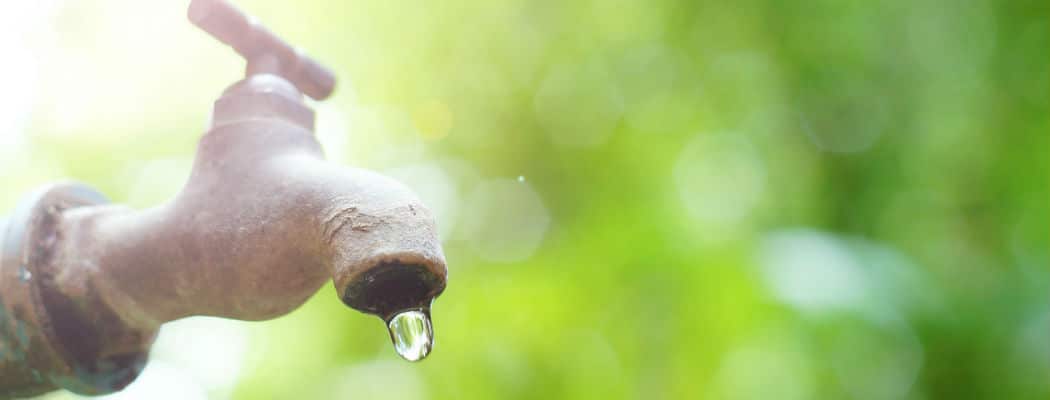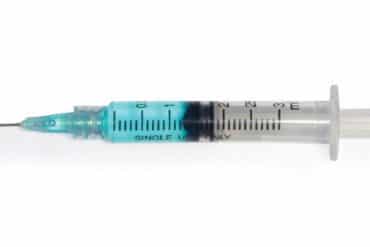Examining the building boom’s potential impact on Nantucket’s drinking water supply.
Until recently, it’s been easy for the average American to take clean drinking water for granted. However, incidents like the drought in California and the Flint, Michigan water crisis have put our country on high alert, prompting the White House and other organizations to pledge over $5 billion this past spring toward protecting the nation’s water supply.
 Along with thousands of privately drilled wells, Nantucket’s drinking water is pumped primarily from two plentiful aquifers, the deepest of which is located 150 feet below the surface. The aquifers were created over 50,000 years ago during the last glaciation period, what’s known as the Wisconsin Glaciation. Many people mistakenly believe that the aquifers are somehow connected to an underground river that runs fresh water from the White Mountains of New Hampshire. In reality, the aquifers are replenished by rain water that’s purified by the island’s sandy soil.
Along with thousands of privately drilled wells, Nantucket’s drinking water is pumped primarily from two plentiful aquifers, the deepest of which is located 150 feet below the surface. The aquifers were created over 50,000 years ago during the last glaciation period, what’s known as the Wisconsin Glaciation. Many people mistakenly believe that the aquifers are somehow connected to an underground river that runs fresh water from the White Mountains of New Hampshire. In reality, the aquifers are replenished by rain water that’s purified by the island’s sandy soil.
Since the early 1900s, the Wannacomet Water Company has tapped into these aquifers, and now pumps upwards of 4.2 million gallons of water per day in the summer. That’s enough water to fill Nantucket High School’s swimming pool twenty-three times. “Most of June, July and August, the pumps don’t stop,” says Wannacomet’s engineer, Mark Willett. “They run twenty-four hours a day, seven days a week.”
Fifteen years ago, pumping more than three million gallons per day was unthinkable, but this July and August, Willett believes that Wannacomet will pump well over four million gallons per day. Will the well ever run dry? “The amount of water we have is amazing,” he says. “There is a surplus every year.” Look no further than Monomoy to witness just how much water we have below our feet. At low tide, water pours onto the beach, and terns, ducks and gulls flock to drink it. “Birds don’t drink salt water,” Willett explains. “Our bowl is full; that’s fresh water going out on the beach.”
 Despite this seeming overabundance, the long-term sustainability of the island’s drinking water should not be taken for granted. The building boom in the last three years has put unprecedented pressure on the aquifers. “It’s not a matter of if we have enough water,” Willett says. “It’s matter of how do we get that water out.” With subdivisions sprouting up and no end to new construction in sight, Willett and his team have been forced to engineer new pump systems to meet this growing demand.
Despite this seeming overabundance, the long-term sustainability of the island’s drinking water should not be taken for granted. The building boom in the last three years has put unprecedented pressure on the aquifers. “It’s not a matter of if we have enough water,” Willett says. “It’s matter of how do we get that water out.” With subdivisions sprouting up and no end to new construction in sight, Willett and his team have been forced to engineer new pump systems to meet this growing demand.
This spring, the United States Geological Survey was on the island using geophysics to create new models that simulate the increased pump rates in the years to come. “We’re getting to a point where we really need to start paying attention,” Willett says. “In five or ten years, maybe the Planning Board and HDC aren’t the first places you go when you’re talking about subdivisions. Maybe the first place you should go is the water department.”
Beyond the increased pressure on the pumps, Nantucket’s construction boom could also have repercussions for the pristine quality of the aquifer’s water. “People don’t realize that the quality of our water is actually better than bottled water,” Willett says. “Some of the scientists we’ve been working with think we’re tapped into what might be Wisconsin Glacial wash, which is 10,000-year-old pure water.” The island serves as a giant sand filter, cleaning and treating the rain water that seeps through the ground. Once this purified rain reaches the aquifer, it is then protected from the up-coning of salt water by layers of clay. These unique conditions yield water with ideal PH levels — between 7.5 and 7.6 — that doesn’t need to be treated or chlorinated at all.
 However, the increase in construction also increases the chances of contamination. “The growth is a little scary because with that comes the fertilizers and the different uses on the property,” Willett explains. Extreme nitrogen loading in the harbors and ponds due largely to fertilizers might be harbingers of future threats to the aquifer if Nantucket is not watchful. “As more and more people are here, the threat increases for any type of contamination,” says Willett. “A fuel truck could roll over on Milestone near our wells, for instance.”
However, the increase in construction also increases the chances of contamination. “The growth is a little scary because with that comes the fertilizers and the different uses on the property,” Willett explains. Extreme nitrogen loading in the harbors and ponds due largely to fertilizers might be harbingers of future threats to the aquifer if Nantucket is not watchful. “As more and more people are here, the threat increases for any type of contamination,” says Willett. “A fuel truck could roll over on Milestone near our wells, for instance.”
Two billion people don’t have access to clean drinking water around the world. Water-related diseases are a global killer, claiming millions of lives every year. Meanwhile, companies like Nestléhave targeted this precious natural resource as a valuable commodity, aggressively bottling it up from our nation’s aquifers to sell later. Surrounded by water and with a seemingly endless source literally surging from the ground, Nantucket can seem a world away from the global water crisis. But when considering the unknown growth in the island’s population to come, one must wonder is our glass half full or half empty?






